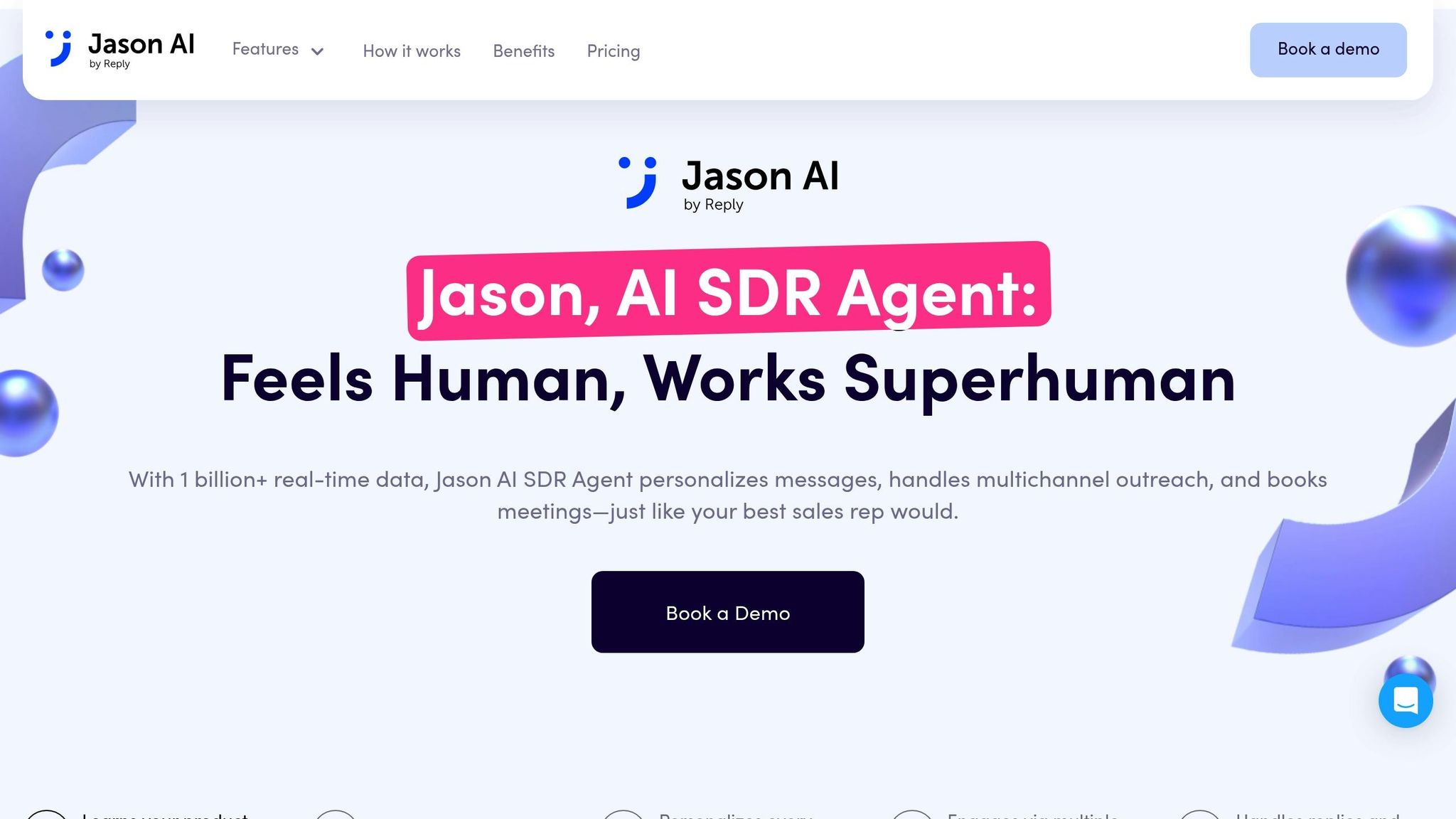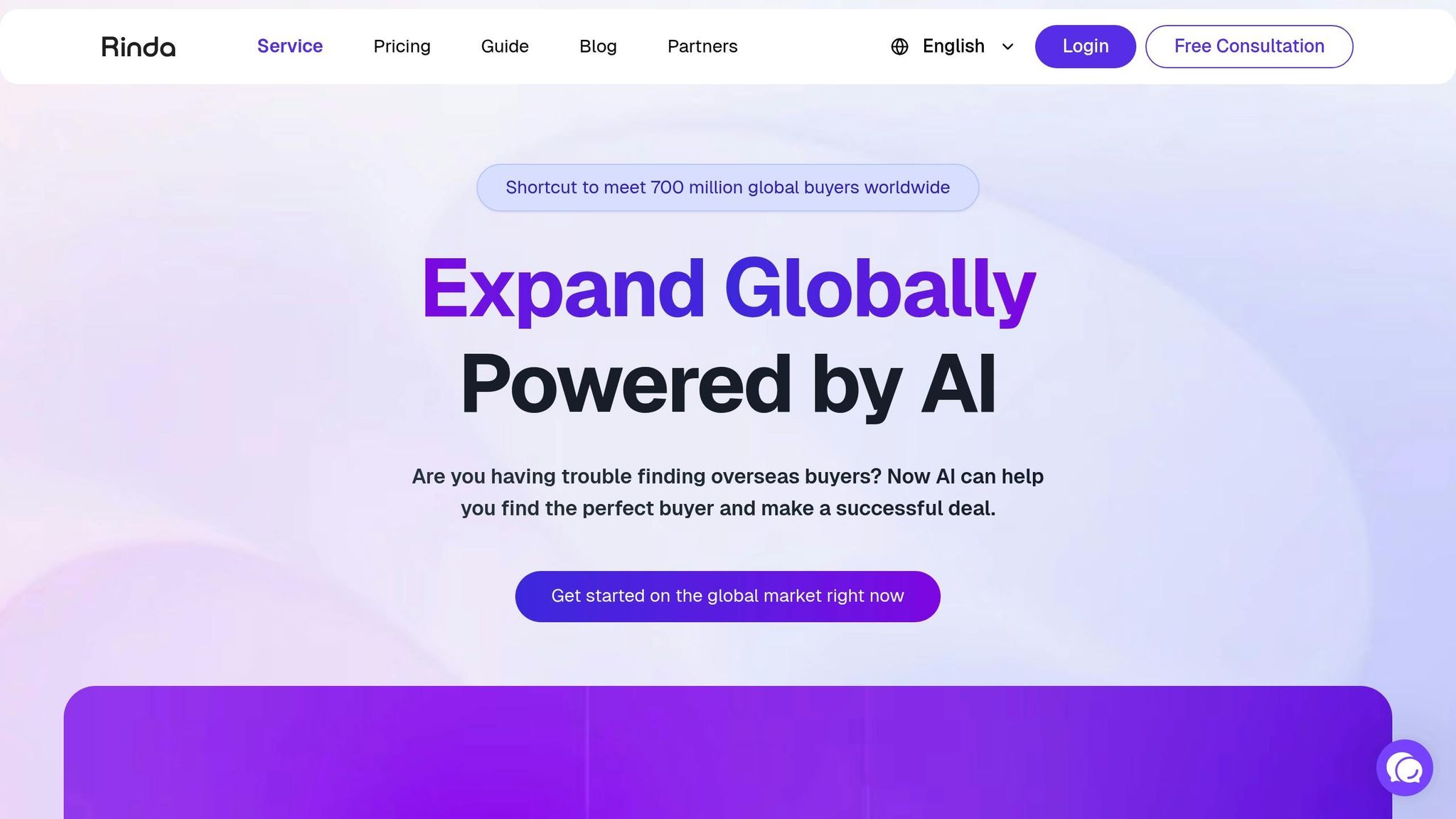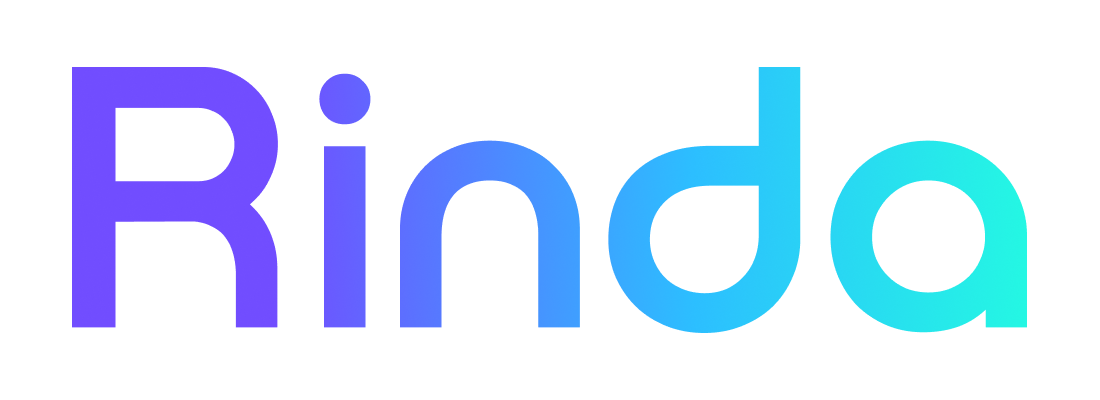Ultimate Guide to AI-Powered Multilingual Sales Training
Explore how AI-driven multilingual sales training enhances global engagement and performance by overcoming language barriers and cultural differences.

In today’s global marketplace, sales teams face increasing pressure to overcome language barriers, cultural differences, and diverse buyer behaviors. According to a recent study, businesses that invest in multilingual sales training see up to a 22% increase in client engagement across international markets. Yet, traditional training methods often fail to meet these demands, leaving teams ill-equipped to compete globally.
In this article, you'll discover:
- How AI-powered tools deliver personalized multilingual training to align with regional business practices.
- The role of real-time feedback and analytics in improving sales interactions across borders.
- Strategies for implementing scalable solutions that support global operations while maintaining consistent messaging.
With AI transforming how sales teams prepare for international markets, now is the time to adopt smarter, data-driven approaches. As businesses expand into new regions, leveraging AI ensures teams stay competitive while reducing costly missteps. Let’s explore how these tools can reshape your global sales strategy.
Multilingual Sales Outreach with Jason AI SDR 2.7 - Close Deals in 50 Languages

Key Features of AI-Powered Multilingual Sales Training Platforms
AI-powered multilingual sales training platforms are designed to support every stage of global sales, from initial prospecting to refining performance. By understanding the core features of these platforms, businesses can make smarter decisions about their international growth strategies. These tools work seamlessly to simplify and improve every aspect of global sales training.
AI-Driven Content Translation and Localization
Accurate translation and localization are critical for connecting with a global audience. AI platforms combine machine translation with cultural insights to ensure training materials resonate with diverse regions. This approach doesn’t stop at word-for-word translation; it incorporates local customs, business etiquette, and communication styles specific to each region. For example, sales teams can learn when a direct pitch is effective versus when a relationship-focused approach is better suited to the market.
Automated Buyer Discovery and Lead Qualification
Automated buyer discovery is a game-changer in sales training. These platforms gather data from multiple sources to identify potential buyers, creating detailed buyer profiles that reflect the complexities of real-world sales. This feature helps sales teams focus their efforts on high-quality leads, saving time and improving efficiency.
Personalized Learning Paths and Real-Time Feedback
Personalized training paths are crafted using machine learning algorithms that analyze individual performance metrics. By identifying specific skill gaps, these platforms deliver training tailored to each salesperson's needs. The training adjusts dynamically, adapting its pace and complexity as the user progresses. Real-time feedback further enhances learning by providing immediate insights that drive continuous improvement.
Performance Analytics and Reporting
Performance analytics transform data into actionable insights. Dashboards provide real-time visibility into how training is performing across different markets and languages. Managers can pinpoint which modules are most effective and identify areas where additional coaching is needed. Predictive analytics take this further by helping teams anticipate challenges and refine their strategies proactively.
How RINDA Improves Multilingual Sales Training

RINDA exemplifies how these features can be integrated into a comprehensive solution for multilingual sales training.
This platform automates global buyer discovery while supporting communication in over 20 languages, turning everyday sales interactions into learning opportunities. RINDA’s tailored strategies enable sales teams to fine-tune their techniques with each engagement. Its performance analysis tools provide insights into which communication styles are most effective in various markets, helping teams overcome both language and cultural barriers. By blending hands-on experience with continuous training, RINDA ensures sales representatives are consistently improving their skills on a global scale.
Implementation Strategies
Rolling out AI-powered multilingual sales training requires a mix of strategic planning, technical setup, and effective change management. A thoughtful approach ensures your team can fully benefit from the advanced tools these platforms offer. By following a structured process, your sales operations can shift from reactive to forward-thinking, enabling your team to connect with global markets more effectively. These steps build on the platform features discussed earlier, guiding your team toward success in international sales.
Assessing Your Organization's Readiness
Before diving into implementation, it's essential to evaluate your organization's current capabilities and identify areas for improvement. This readiness check lays the groundwork for a smooth transition and ensures the platform aligns with your specific needs.
Start by analyzing your sales performance metrics - such as conversion rates, deal closure times, and customer feedback. This data will help you pinpoint where multilingual training can have the most impact.
Survey your team’s language skills and familiarity with different business cultures. This assessment will help you prioritize high-need markets and determine the intensity of training required for each team member.
Examine your technology infrastructure and data quality. AI platforms thrive on clean, well-organized data. Review your CRM system, lead databases, and training records to ensure they’re compatible with the new platform. Poor data quality can undermine the personalization and analytics capabilities that make AI tools so powerful.
Setting Up the Platform for Global Operations
Configuring the platform for global use requires a balance between scalability and adaptability. Training content must resonate with diverse markets while maintaining alignment with your overall business goals.
Set up language preferences and regional configurations to reflect the needs of your target markets. For U.S.-based operations, ensure the use of formats like dollars ($), MM/DD/YYYY dates, and imperial measurements.
Define user roles and permissions based on your organizational structure. For example, sales reps, team managers, and regional directors should each have access to content relevant to their roles. This setup helps prevent information overload and ensures data security.
Integrate the platform with your existing tools, such as CRM systems, to streamline workflows. This eliminates duplicate data entry and allows training insights to directly inform sales strategies.
Creating Training Modules for Different Markets
Effective training modules combine universal best practices with localized content tailored to specific markets. This approach ensures consistency across your brand while respecting regional differences in business norms and communication styles.
Develop core training scenarios that cover sales fundamentals, then customize them for different regions. For instance, objection-handling techniques might differ between the direct communication style common in Germany and the relationship-focused approach preferred in Japan.
Use CRM data and market research to create detailed buyer personas. These personas should include cultural preferences, decision-making behaviors, and common challenges. Update them regularly based on team feedback and real-world sales interactions.
Design training paths that gradually increase in complexity. Begin with basic language and cultural awareness training, then move on to advanced topics like negotiation strategies. This step-by-step approach helps team members build genuine expertise without feeling overwhelmed.
Building Feedback Loops and Continuous Improvement
A successful training program evolves over time, adapting to market changes and team needs. Building feedback mechanisms into your process ensures the program stays relevant and effective.
Schedule monthly reviews to link training engagement with sales outcomes. Metrics like time-to-competency for new markets and post-training conversion rates can reveal areas for improvement.
Create channels for ongoing feedback from both sales teams and customers. Sales reps can share which scenarios reflect real-world challenges, while customer feedback can highlight whether the training is improving their experience. This dual input ensures the program remains practical and impactful.
Set up automated alerts to flag outdated training content. Rapid changes in market conditions can make some materials obsolete, so staying proactive is key.
These feedback systems prepare your team for the next critical step: managing change and ensuring full adoption.
Managing Change and Getting Team Buy-In
The success of any new platform depends on how well it’s adopted by your team. Clear communication and a thoughtful change management strategy can help overcome resistance and ensure a smooth transition.
Explain the personal benefits to team members, such as how the platform offers personalized coaching and real-time feedback to enhance their daily performance.
Identify and support early adopters who can act as champions within your team. These individuals can showcase the platform’s benefits through their own success, helping to ease concerns among more skeptical colleagues. Providing additional resources to these champions equips them to mentor others effectively.
Roll out the platform in phases to minimize risks and build confidence. Start with a pilot group of enthusiastic users, gather their feedback, and make adjustments before expanding to the entire team. This gradual approach not only reduces potential disruptions but also fosters trust in the platform’s value.
Best Practices and Use Cases
AI-powered multilingual sales training delivers tangible results by turning theoretical strategies into actionable outcomes. These approaches enable sales teams to effectively navigate the challenges of international markets. Below, we explore key practices and real-world examples that highlight its impact.
Using AI for Skill Gap Analysis and Targeted Coaching
AI-driven tools offer a smarter way to identify and address training gaps across diverse markets. Instead of relying on one-size-fits-all programs, these platforms analyze individual performance to create tailored development plans.
The process starts with gathering detailed data. AI systems review conversation recordings, email exchanges, and deal progression metrics to uncover subtle communication gaps. For instance, they might detect mismatches in communication styles or pinpoint delays in follow-up timing that could hinder success.
One powerful example is how AI identifies cultural communication differences. A team member might excel in German markets, where directness is appreciated, but struggle in Japanese markets due to overly blunt communication. By flagging these patterns, AI enables managers to provide targeted coaching to address cultural nuances.
The training doesn’t stop at language skills. It includes negotiation strategies, relationship-building techniques, and decision-making approaches tailored to specific markets. This ensures sales representatives develop well-rounded skills that go beyond surface-level language abilities.
Additionally, simulation-based training complements this analysis, accelerating skill development and readiness.
Faster Onboarding with Multilingual Simulations
Simulations offer a highly effective way to onboard new hires by immersing them in realistic buyer interactions. These experiences condense months of learning into focused training sessions, preparing representatives for the challenges of their target markets.
The key to effective simulations lies in their authenticity. AI systems create scenarios based on real customer data, replicating cultural contexts and buyer personas that new hires are likely to encounter. This ensures the training feels relevant and engaging.
Simulations adapt to individual learning speeds, presenting increasingly complex scenarios as participants grow more confident. This personalized approach keeps learners motivated without overwhelming them.
Language integration in these simulations goes beyond simple translation. Participants learn to pick up on cultural cues, adjust their communication styles in real-time, and respond to different negotiation tactics. These skills are critical when transitioning from training to live customer interactions.
Detailed performance analytics within simulations track areas like response time, cultural adaptability, and persuasion techniques. These insights help managers determine which representatives are ready for real-world interactions and who may need additional practice in specific areas.
Improving Results with Automated Performance Tracking
Automated performance tracking bridges the gap between training efforts and measurable sales outcomes. By monitoring key metrics across markets, organizations can refine their training strategies and stay ahead of emerging trends.
These systems track more than just sales numbers. Metrics like cultural competency, communication effectiveness, and relationship-building success provide a deeper understanding of how training impacts real-world performance.
For instance, tracking tools can reveal which training modules deliver the best ROI by correlating engagement levels with sales outcomes. This allows organizations to focus on what works and improve or eliminate less effective components.
Performance tracking also highlights regional trends. For example, it might show that representatives in a specific area need additional training due to shifting business customs or increased competition. This data-driven approach ensures training programs remain relevant and effective.
Regular reviews backed by these insights make performance evaluations more impactful, showing progress over time and identifying areas for continued improvement. This evidence-based method strengthens the connection between training investments and business growth.
Success Stories from Real Businesses
Companies using AI-powered multilingual sales training have reported impressive results, including improved market penetration and revenue growth. These real-world examples underscore the practical benefits of strategic training.
For instance, RINDA’s automated buyer discovery and performance analysis tools have created a seamless system for global sales success. By removing traditional barriers, they’ve enabled smaller organizations to compete effectively on an international scale.
Businesses have also seen faster market entry and higher conversion rates in new regions. The combination of simulation-based training and ongoing performance optimization has given them a sustainable edge in global markets.
Organizations that invest in comprehensive training programs consistently achieve stronger results across diverse markets. These efforts not only drive revenue but also help build lasting international relationships, proving the value of AI-powered sales training in today’s competitive landscape.
How to Choose the Right Platform
Selecting an AI platform that aligns with your global growth goals involves balancing technical capabilities, scalability, and cost considerations. Building on earlier discussions about AI-driven training features, this guide will help you choose a tool that strengthens your global strategy.
Focus on three key areas: essential features, systematic comparisons, and standout differentiators. This approach ensures that your investment delivers measurable results rather than relying on marketing claims.
Key Features to Look For
To support multilingual outreach and performance tracking effectively, the platform you choose should include robust multilingual capabilities that account for regional and cultural nuances. For instance, RINDA supports over 20 languages, offering a comprehensive solution for businesses aiming to expand internationally.
Integration is another critical factor. The platform should connect seamlessly with your existing CRM, email, and analytics systems, either through APIs or pre-built connectors.
Advanced platforms stand out by offering AI-driven performance analytics. These tools provide real-time insights, such as email performance metrics and strategy recommendations, to help you refine your approach continuously. Scalability is equally vital as your business grows. The platform should manage increasing user volumes, additional market regions, and expanding data needs efficiently, all while offering flexible pricing that adjusts to your business size.
How to Compare Different Platforms
Start by creating a weighted scoring matrix to prioritize features based on your business goals. For example, if faster market entry or improved conversion rates are key, assign higher weights to features that directly support these outcomes.
Request customized demos that simulate real-world scenarios in your target markets. This can uncover potential limitations that generic demonstrations might miss. Additionally, evaluate the total cost of ownership, including implementation, training, ongoing support, and integration expenses - not just the subscription fees.
Consider the vendor's experience and support capabilities. Platforms backed by teams with proven expertise in global sales are more likely to provide reliable long-term partnerships. Look for case studies, customer testimonials, and examples of successful international expansion to build confidence in your decision.
Why RINDA is Different
RINDA sets itself apart with its integrated approach to global sales enablement. It doesn't just train teams - it supports the entire sales process with AI-powered tools for buyer discovery, real-time validation, and personalized strategies.
The platform’s automated buyer discovery identifies prospects across international markets, while real-time interest verification ensures sales teams focus on qualified leads. RINDA also creates tailored email campaigns and refines strategies based on performance data, making it a complete sales enablement solution.
RINDA’s All‑in‑One plan starts at approximately $615 per month for 50 teams and includes dedicated global sales support with performance guarantees. Its "no meeting, full refund" policy further demonstrates its commitment to delivering results, aligning vendor success with your international growth objectives.
Conclusion and Next Steps
AI-powered multilingual sales training is reshaping the way businesses prepare their global sales teams. Consider this: 84% of sales training is forgotten within 90 days, yet AI-driven methods help new sales reps become fully productive up to 60% faster. With 92% of executives planning to increase AI investments by 2025, the question isn't whether to adopt these technologies, but how quickly they can be implemented effectively.
The benefits go far beyond efficiency. Companies using AI-driven training have seen a 17% boost in first-year goal achievement among sales reps. One organization even reported annual cost savings of around €650,000 due to reduced first-year attrition. These results are powered by AI's ability to deliver tailored learning experiences in native languages, unlimited practice opportunities, and actionable insights that traditional methods simply can't provide.
Key Takeaways
To succeed, companies need multilingual capabilities, seamless integration across systems, and ongoing performance refinement. Training in a native language significantly improves understanding and retention, making multilingual support a necessity for global teams. Platforms like RINDA, which support over 20 languages, enable inclusive training programs that enhance engagement and confidence across diverse workforces.
Personalization is another standout benefit of AI-powered training. With only 26% of sales reps currently receiving weekly feedback from human coaches, AI fills the gap by offering continuous guidance and real-time adjustments. This feedback loop, combined with automated performance tracking, allows businesses to pinpoint skills gaps and deliver targeted coaching quickly.
Effective training platforms also integrate with CRM tools, email systems, and analytics platforms, creating a unified ecosystem that supports the entire sales cycle. This approach ensures that training directly influences performance metrics and delivers measurable business outcomes.
Getting Started with AI for Global Growth
The next step is clear: start implementing AI-driven training strategies to achieve tangible results. Begin with a pilot program targeting a specific market or product line. This phased approach allows you to test integration, measure impact, and refine processes before scaling across your organization.
Choose platforms that go beyond basic training modules. For example, RINDA combines AI-driven buyer discovery, real-time interest tracking, and personalized email campaigns with robust multilingual training. This comprehensive approach aligns with international growth goals while minimizing implementation risks.
Set clear success metrics before launching. Track KPIs like time-to-productivity for new hires, market-specific conversion rates, and retention among trained reps. These benchmarks will help demonstrate ROI and guide ongoing improvements .
Finally, remember that AI doesn't replace human coaching - it amplifies it. By leveraging AI's ability to scale and analyze data alongside human mentorship for complex decision-making, businesses can create training programs that offer lasting competitive advantages in the global market .
FAQs
How does AI-powered multilingual sales training boost engagement and improve knowledge retention?
AI-driven multilingual sales training transforms how teams learn by offering customized and interactive experiences tailored to the specific needs of sales professionals. This approach adjusts content to reflect regional and language differences, making training more relatable and engaging. As a result, sales representatives are more likely to stay focused and retain the material effectively.
Beyond enhancing engagement, AI simplifies the training process with scalable and consistent programs that help cut costs without sacrificing quality. This method strengthens skill development and promotes lasting success by creating an adaptable and culturally conscious learning environment.
What should global organizations consider when implementing AI-powered multilingual sales training?
To roll out AI-driven multilingual sales training across a global organization, a structured approach is essential. Begin by ensuring your technological infrastructure is up to the task. Reliable data systems and adequate processing power are fundamental to support AI tools effectively, ensuring smooth operations and the ability to grow as needed.
Equally important is managing the transition within your teams. Resistance to change can be a hurdle, so invest in comprehensive training and maintain open communication. Help your teams understand the value of AI solutions and build their confidence in the technology.
Another critical step is developing training content that resonates across different regions. Using AI for precise translation and localization allows you to create materials that are not only linguistically accurate but also sensitive to regional nuances. This ensures your training is both engaging and effective, no matter the location.
By addressing these foundational elements, your organization can implement AI-powered multilingual sales training successfully and ensure its acceptance across diverse global teams.
How can AI tools help sales teams navigate cultural differences in global markets?
AI tools equip sales teams with the ability to bridge cultural gaps by analyzing communication styles and local customs. This ensures interactions are respectful and aligned with regional expectations. With features like real-time language translation and insights into cultural subtleties, these tools help reduce misunderstandings and create smoother, more effective communication.
Beyond just translation, AI also customizes outreach efforts by adapting content to fit the preferences and expectations of specific audiences. This tailored strategy enhances engagement, strengthens connections with international clients, and supports businesses in achieving stronger global sales performance.
